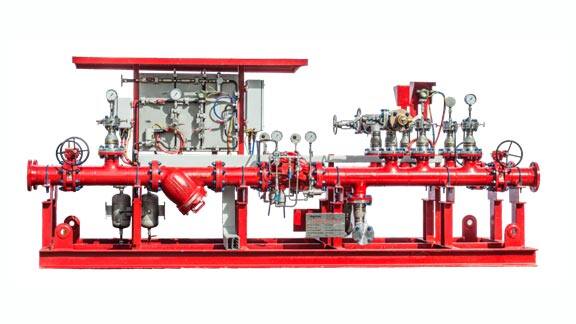
Protecting Lives and Assets The Transformative Impact of Johnson Controls Fire Systems
In a world increasingly defined by complex infrastructures and rising urban populations, Johnson Controls Fire solutions stand as a critical safeguard for human lives and vital assets. As Singapore continues to expand its skyline and industrial footprint, fire safety has become a cornerstone of sustainable development. With over 2,800 reported fire incidents in 2022 alone, according to the Singapore Civil Defence Force (SCDF), the need for robust and intelligent fire safety systems has never been greater.
This article delves into how Johnson Controls Fire technologies redefine fire prevention and response, providing a comprehensive look at their systems, their application in Singapore, and why they matter for businesses and communities alike.
The Evolution of Fire Safety
Fire safety has come a long way from basic alarms and extinguishers. The integration of smart technologies into fire prevention and control has revolutionised how we think about safety. Johnson Controls Fire leads the charge in this evolution with systems designed to:
- Detect Early: Advanced smoke and heat sensors identify risks before they escalate.
- Respond Intelligently: Automated suppression systems activate with precision, targeting only affected areas.
- Integrate Seamlessly: IoT-enabled systems communicate with building management platforms for a holistic safety strategy.
Why Singapore Needs Advanced Fire Systems
Singapore’s unique urban and industrial environment presents specific fire safety challenges:
- High-Density Living: The island nation’s vertical housing model demands rapid evacuation and fire containment strategies.
- Industrial Risks: Manufacturing and petrochemical hubs on Jurong Island and elsewhere pose heightened fire hazards.
- Climate Challenges: Singapore’s humid climate can accelerate electrical faults, a common fire cause.
Johnson Controls Fire systems are tailored to address these nuances, offering solutions that align with Singapore’s stringent safety regulations, such as the Fire Code administered by SCDF.
Features That Set Johnson Controls Fire Apart
- Advanced Detection Systems
Johnson Controls Fire leverages cutting-edge technologies like:
- Multi-Sensor Detectors: Combining smoke, heat, and carbon monoxide detection for accuracy.
- False Alarm Reduction: Algorithms filter out non-fire stimuli, minimising disruptions.
- Smart Suppression Solutions
Fire suppression no longer relies solely on traditional sprinklers. Key innovations include:
- Water Mist Systems: Minimises water usage while maximising fire control efficiency.
- Gas-Based Suppression: Ideal for data centres and critical facilities.
- Integrated Safety Platforms
- IoT-enabled fire systems connect seamlessly with:
- HVAC systems for smoke control.
- Emergency lighting for guided evacuation.
- Real-time monitoring through mobile apps.
- Sustainability Features
- Fire suppression agents used are environmentally friendly, adhering to global sustainability goals.
Applications of Johnson Controls Fire Systems in Singapore
- Commercial Buildings
In high-rise offices and shopping malls, where thousands of occupants gather daily, Johnson Controls Fire systems ensure:
- Immediate detection and suppression of fire threats.
- Minimal disruption to business operations through targeted response mechanisms.
- Data Centres
As Singapore cements its position as a global data hub, protecting these facilities is paramount. Gas-based fire suppression systems protect servers from water damage while ensuring compliance with fire safety standards.
- Industrial Facilities
Factories and petrochemical plants benefit from Johnson Controls’ customised fire solutions, which include:
- High-capacity suppression systems for large-scale operations.
- Continuous monitoring of hazardous materials.
- Residential Complexes
HDB blocks and private residences are safeguarded through interconnected alarm systems, ensuring rapid evacuation and SCDF response.
Singapore Statistics That Highlight the Need
- Top Fire Causes: Electrical faults account for over 65% of residential fires in Singapore, emphasising the need for intelligent detection systems.
- Response Time: SCDF’s average fire response time is under 8 minutes, but integrated fire systems can activate suppression within seconds.
- Economic Impact: Fire incidents cost Singapore businesses millions annually in damages and downtime.
The Importance of Proactive Fire Safety
Fire safety is often overlooked until it’s too late. A proactive approach, like investing in Johnson Controls Fire systems, offers significant benefits:
- Life Safety: Protect occupants with early warning and rapid suppression.
- Business Continuity: Prevent downtime and minimise asset damage.
- Regulatory Compliance: Meet or exceed SCDF Fire Code requirements.
- Reputation Management: Demonstrate commitment to employee and customer safety.
Choosing the Right Fire Safety Partner
When selecting a fire safety provider, consider these factors:
- Customisation: Does the solution address the specific risks of your facility?
- Technology Integration: Can the systems work with your existing infrastructure?
- After-Sales Support: Ensure regular maintenance and upgrades.
- Certifications: Johnson Controls Fire systems are certified to meet international and Singaporean standards.
The Future of Fire Safety
As cities become smarter, so must their fire safety systems. Innovations in AI, machine learning, and predictive analytics will further enhance Johnson Controls Fire solutions, enabling:
- Predictive Risk Management: Identifying fire risks before they materialise.
- Autonomous Response Systems: AI-driven suppression systems that adapt dynamically.
- Community Integration: Connecting fire safety systems across neighbourhoods for coordinated responses.
Fire safety isn’t just about putting out flames—it’s about envisioning a future where technology and foresight eliminate risks before they arise. By investing in cutting-edge solutions like Johnson Controls Fire, Singaporeans can ensure the safety of their people, properties, and progress.
